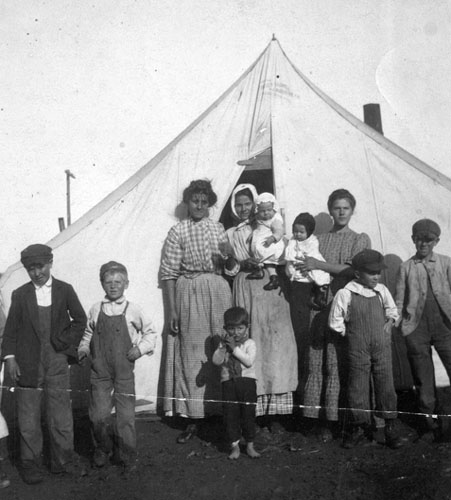Remembering Ludlow
TBF note: I find the corollaries between now and 100 years ago mighty interesting.
The New York Times carried an editorial on the events in Colorado, which were not attracting international attention. The Times emphasis was not on the atrocity that had occurred, but on the mistake in tactics that had been made. Its editorial on the Ludlow Massacre began: “Somebody blundered …”
Ludlow Massacre: April 20, 1914
Shortly after Woodrow Wilson took office there began in Colorado one of the most bitter and violent struggles between workers and corporate capital in the history of the country.
This was the Colorado coal strike that began in September 1913 and culminated in the “Ludlow Massacre” of April 1914. Eleven thousand miners in southern Colorado … worked for the Colorado Fuel & Iron Corporation, which was owned by the Rockefeller family. Aroused by the murder of one of their organizers, they went on strike against low pay, dangerous conditions, and feudal domination of their lives in towns completely controlled by the mining companies. …
When the strike began, the miners were immediately evicted from their shacks in the mining towns. Aided by the United Mine Workers Union, they set up tents in the nearby hills and carried on the strike, the picketing, from these tent colonies.
The Ludlow Tent Colony, before the massacre, consisted of about 200 tents.
The gunmen hired by the Rockefeller interests—the Baldwin-Felts Detective Agency—using Gatling guns and rifles, raided the tent colonies. The death list of miners grew, but they hung on, drove back an armored train in a gun battle, fought to keep out strikebreakers. With the miners resisting, refusing to give in, the mines not able to operate, the Colorado governor (referred to by a Rockefeller mine manager as ‘our little cowboy governor’) called out the National Guard, with the Rockefellers supplying the Guard’s wages ...
More here:
http://zinnedproject.org/materials/ludlow-massacre/

